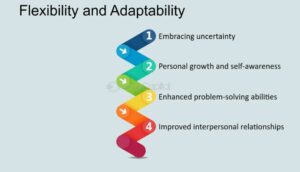
Economy
The “creator economy” is booming, transforming the way individuals produce, distribute, and monetize content. With platforms like YouTube, TikTok, and Instagram, creators can reach global audiences, turning their passion into profitable careers. However, behind the scenes, technical processes like “video transcoding” play a crucial role in ensuring that creators’
content is delivered efficiently and in high quality to a diverse range of devices and networks. This blog explores the role of video transcoding in supporting the creator economy and why it is a critical component for creators aiming to maximize their reach and impact.
The Rise of the Creator Economy
The creator economy refers to the ecosystem of independent content creators, social media influencers, bloggers, and video producers who generate income directly from their content. Unlike traditional media industries, where content production and distribution were controlled by a few large corporations, the creator economy empowers individuals to create, share, and monetize their content without intermediaries.
According to a report by SignalFire, over 50 million people worldwide consider themselves creators, with around 2 million making a full-time income from their content. This surge is fueled by technological advancements, including high-speed internet, mobile devices, and the proliferation of social media platforms. As a result, the creator economy has become a multi-billion-dollar industry, providing diverse income streams such as ad revenue, brand partnerships, subscriptions, and merchandise sales.
However, to succeed in this competitive landscape, creators must ensure their videos are accessible, engaging, and optimized for different viewing environments. This is where video transcoding comes into play.
What is Video Transcoding?
Video transcoding is the process of converting a video file from one format to another, enabling it to be viewed on various devices and networks. During transcoding, the original video file is decoded, compressed, and encoded into multiple formats, resolutions, and bitrates to ensure compatibility across different platforms and devices.
For example, a creator might upload a high-definition (HD) video to a platform like YouTube. The platform then transcodes the video into multiple versions—1080p, 720p, 480p, and so on—to accommodate users with different internet speeds and screen sizes. This process ensures that viewers receive the best possible quality based on their available bandwidth and device capabilities.
The Importance of Video Transcoding in the Creator Economy
Maximizing Reach Across Platforms: Creators distribute their content across multiple platforms, each with its own technical requirements for video formats, resolutions, and codecs. Video transcoding helps convert a single source video into multiple formats compatible with various platforms, such as YouTube, Facebook, TikTok, and Instagram. By doing so, creators can expand their audience reach and ensure that their content is accessible to viewers on any device, whether it’s a smartphone, tablet, or desktop computer.
Enhancing User Experience: In the creator economy, user experience is paramount. Poor video quality or buffering can lead to viewer drop-off, impacting a creator’s engagement metrics and revenue potential. Transcoding enables adaptive bitrate streaming, which dynamically adjusts the video quality based on the viewer’s internet speed. This results in smoother playback and a more enjoyable viewing experience, increasing the likelihood that viewers will stay longer, engage more, and return for future content.
Reducing Storage and Delivery Costs: High-quality videos are often large files that require significant storage and bandwidth to deliver. Transcoding compresses these files without compromising quality, reducing storage and delivery costs. This efficiency is particularly important for independent creators who may not have access to large-scale infrastructure and need to minimize costs while maintaining high-quality content delivery.
Optimizing for Search and Discovery: Many platforms prioritize content that is optimized for user experience, including quick loading times and minimal buffering. Proper video transcoding helps creators meet these requirements, improving their chances of appearing in search results and recommendations. This visibility is crucial in the creator economy, where discoverability can make or break a creator’s success.
How Video Transcoding Empowers Creators
Quality Control Across Devices: Creators often produce content in a single format, such as 4K or HD. However, not all devices or networks can handle such high-definition formats efficiently. Video transcoding allows creators to maintain the original quality while generating lower-resolution versions that cater to viewers with different bandwidth capacities and device capabilities. This flexibility ensures that viewers always have access to the best possible version of the content, regardless of their situation.
Monetization Through Multiple Channels: With transcoding, creators can tailor their content to meet the specific requirements of different platforms, maximizing their monetization opportunities. For example, a video that performs well on YouTube may need to be reformatted for TikTok, which has different resolution and duration constraints. By transcoding their content, creators can repurpose videos across various channels, effectively reaching different audience segments and increasing revenue potential.
Localized Content for Global Audiences: The creator economy is inherently global, with audiences spanning multiple countries and regions. Video transcoding enables creators to produce content in various formats suitable for different network conditions worldwide. Moreover, transcoding can support multiple language versions, enabling creators to localize their content through subtitles, dubbing, or other methods, broadening their audience base and fostering international growth.
Conclusion
As the creator economy continues to flourish, video transcoding remains a fundamental technology that enables creators to maximize their reach, engagement, and monetization opportunities. By ensuring that content is compatible across platforms, devices, and network conditions, video transcoding empowers creators to deliver high-quality viewing experiences, expand their global footprint, and maintain competitive advantage in a crowded digital landscape.







